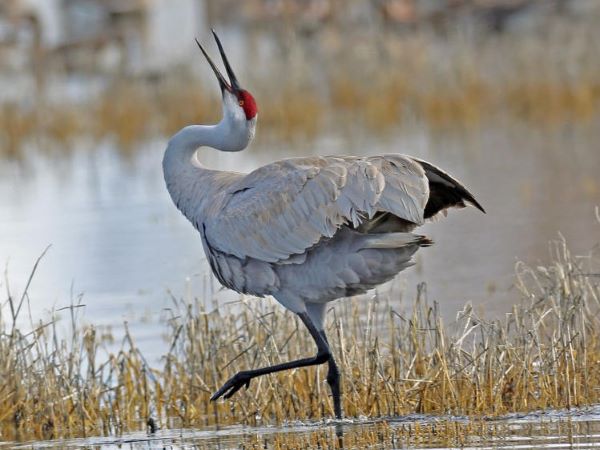The birds are coming, and we encourage everybody to get outside and enjoy spring birding…
Debbie Schlenoff
 As described in the president’s column last month, the National Audubon Society recently released a report indicating that over half of North American bird species are threatened by climate change. (See the report at http://climate.audubon.org/.) The geographical ranges in the report are based on physical parameters such as temperature and precipitation, so they do not always exactly match actual field sightings of all the different species of birds. However, the data are clear; large portions of ranges will be lost or shifted due to climatic changes, and in many cases, there will be insufficient habitat to support the birds in their modified ranges. In Oregon, we will see the loss of more than 90% of the summer range of species such as the Northern Pygmy Owl, Merlin, Barrow’s Goldeneye, and Townsend’s Solitaire. You can find more information specific to Oregon at http://climate.audubon.org/geographical-search/oregon.
As described in the president’s column last month, the National Audubon Society recently released a report indicating that over half of North American bird species are threatened by climate change. (See the report at http://climate.audubon.org/.) The geographical ranges in the report are based on physical parameters such as temperature and precipitation, so they do not always exactly match actual field sightings of all the different species of birds. However, the data are clear; large portions of ranges will be lost or shifted due to climatic changes, and in many cases, there will be insufficient habitat to support the birds in their modified ranges. In Oregon, we will see the loss of more than 90% of the summer range of species such as the Northern Pygmy Owl, Merlin, Barrow’s Goldeneye, and Townsend’s Solitaire. You can find more information specific to Oregon at http://climate.audubon.org/geographical-search/oregon.
http://www.stateofthebirds.org/extinctions/watchlist.pdf) and 33 common species (for example, Northern Pintail, Horned Lark, Varied Thrush, Wilson’s Warbler, Pine Siskin) that are in steep decline (www.stateofthebirds.org/habitats/2014%20SotB%20CBinSD_FINAL.pdf).
Both reports mark the 100th anniversary of the death of the last known Passenger Pigeon, a once common species that filled the skies with flocks numbering in the billions, yet was driven to extinction in less than half a human lifetime.
The State of the Birds Report 2014 (www.stateofthebirds.org/), which evaluates the current status of bird populations, provides an opportunity to compare data to the first report published five years ago. Hardest hit over these five years have been aridland birds and eastern and western forest-bird populations. All Hawaiian forest birds are listed. The good news is that many coastal and wetlands species populations have increased because of dedicated conservation efforts. An example of a successful conservation partnership consisting of both private and public entities is found in the Klamath-Siskiyou Oak Network, which has restored 6,000 acres on federal, state, and private lands in southern Oregon, action that has benefitted birds such as the Oak Titmouse. Many seabird populations have benefited from changes to commercial fishing operations. Streamers on long-line fishing vessels deter birds, resulting in a 50% reduction in incidental bycatch in Alaskan waters between 2007 and 2012. Some waterfowl such as Wood Ducks are doing better thanks to restoration and protection of wetland habitat. Fees from hunting licensing have contributed a great deal to conservation efforts in wetlands.
We are fortunate to have the tools to monitor populations and assess threats. We have the know-how to develop effective conservation plans. The question remains: Do we have the foresight to invest in conservation protections before other bird populations suffer the irreversible fate of the Passenger Pigeon?




